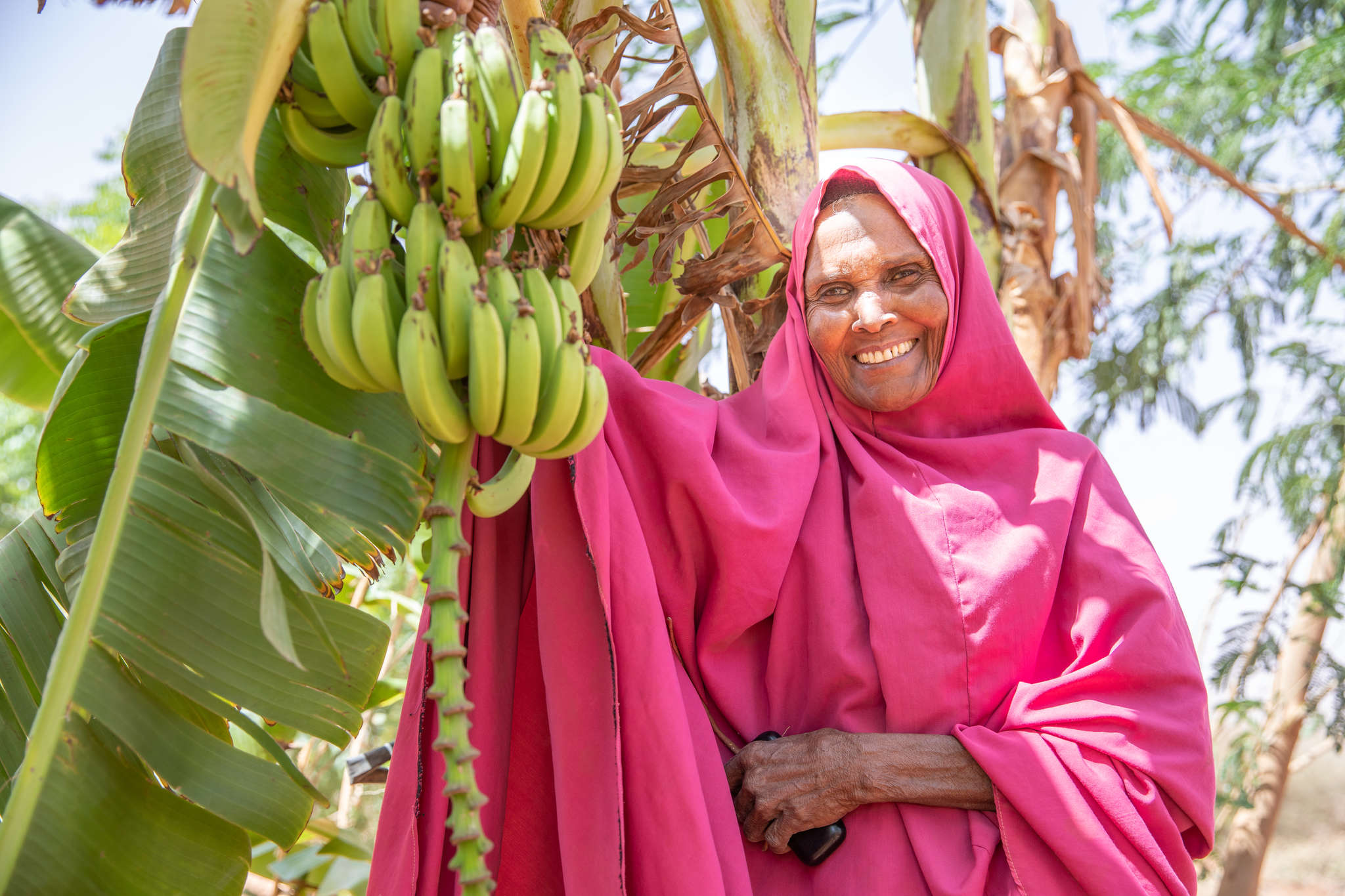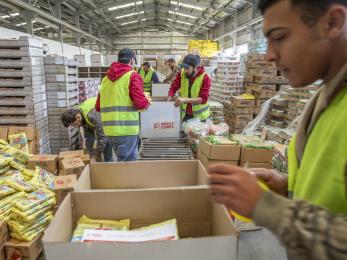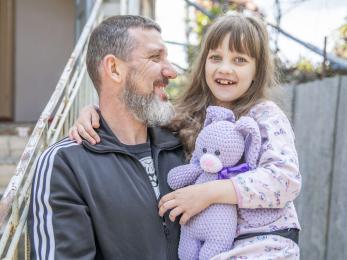Q&A: How is the Syria crisis reshaping the Middle East?
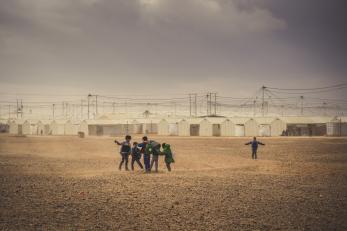
This story is part of our special series, 7 for 7: Seven voices for seven years of the Syria crisis. View the complete series here ▸
Seven years after the Syrian war unleashed one of history’s worst humanitarian crises, about 5 million refugees are still sheltering in neighboring countries. Jordan hosts 700,000 Syrians, while Lebanon provides refuge to nearly 1 million — enough to total one-quarter of its population. The conflict has transformed these two countries, creating new political, demographic and economic challenges.
Below, Mercy Corps’ country directors in Lebanon and Jordan, George Antoun and Hunter Keith, explain how this crisis is reshaping the region, the difficulty of anticipating what may happen next, and how Mercy Corps is working to reach Syrian, Jordanian and Lebanese families in a crisis that is continuing to grind on far longer than most imagined.
In Jordan and Lebanon, Mercy Corps provides emergency assistance, helps strengthen the fabric of Syrian and host communities, and provides tools to boost livelihoods and help develop local economies. Read on to learn more.
Would you both describe some of the ways your programs help people?
GEORGE ANTOUN: Our work empowering communities in Lebanon includes a focus on women and girls, which leads to better governance and community participation. We also have projects to end gender-based violence that help women, children and men. We provide skills training and social support for kids and youth who are troubled, whether they are out of school or have problems in their families.
We also do vocational training to boost people’s skills to improve their chances in the job market, as well as support small and medium-sized enterprises by providing software, equipment or consultants to work with them on strategy. Among the urgent needs that we address are providing water, building latrines and working with communities on larger projects, such as fixing the water network.
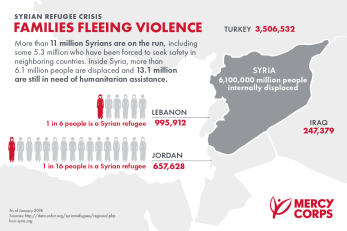
HUNTER KEITH: In Jordan, we have projects devoted to child welfare in the Azraq and Zaatari refugee camps to provide spaces where children can play and learn. We also work with people with disabilities to integrate them into formal education, both in schools in the camps and host communities. Most of those beneficiaries are Syrian, but there are Jordanians as well.
We also help Syrian beneficiaries in host communities with cash assistance for things like winterization or civil documentation. There is a huge number of Syrians who never went through an official registration process with either the UN or another agency or who left camps without formal permission. Others need help providing educational documents or proof of marriage to gain work permits. Documentation is really important for folks who never quite got their papers in order when they fled their homes in a war zone.
For refugees in Zaatari, a back-to-school to remember ▸
How has the response from host communities evolved over seven years?
GEORGE ANTOUN: When Syrian refugees started pouring into Lebanon, the political situation in the country was so complex that none of the political parties wanted to touch it, which is why we have informal settlements. It was really chaotic at the beginning, but with time, and with the help of the United Nations and nonprofits like Mercy Corps, it improved. Nonprofits created a forum about four years ago that now includes 42 international humanitarian agencies coordinating with each other.
Now we see the government trying to apply more centralization than before. The government is engaged. Last year, the government waived the annual fee of $200 for residence permits that many Syrians had struggled to pay. This includes all Syrians aged 15 and above, however, refugees tell us the fee waiver is not implemented coherently and refugee men of working age are sometimes excluded from obtaining legal stay. This is pushing them to find a Lebanese sponsor, a process that may cost as much as $1,000, expose them to exploitation, and affect their refugee status as they are often labeled migrant workers.
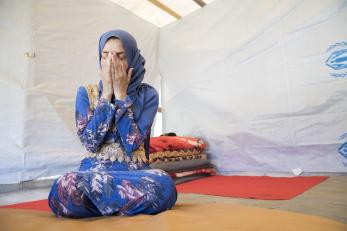
How does integrating Syrians in their host communities impact community relations? Are they being accepted, or not?
HUNTER KEITH: Once you resolve the humanitarian needs, then you can start working at the community level to integrate people, and then you have some opportunities to help make communities more prosperous.
Our programs drive real collaboration between Syrians and Jordanians in areas that have taken in large numbers of refugees. We reach out to both groups and say, "Look, we have some resources that we can use to improve infrastructure and services. We need your cooperation as a group to help us understand what your priorities are." This gets the two groups talking with one another, and they usually come out with a much better understanding of each other’s issues and how they can solve them jointly.
Once you resolve the humanitarian needs, then you can start working at the community level to integrate people, and then you have some opportunities to help make communities more prosperous.
There’s a lot of economic pain in Jordan, even if you were to take away the refugee issue. The loss of trade with Iraq and Syria over the last two decades has made this a place of desperate challenges. Jordan has been very generous with refugees, but there is some fatigue and very real pressures on people and the economy.
GEORGE ANTOUN: In Lebanon, all but two of our programs are a mixture of Lebanese, Syrians and sometimes Palestinian refugees. Before the war, Lebanon was used to hosting 300,000 or more Syrians who worked in agriculture and construction because you couldn’t find Lebanese to do these jobs. The difference now is that instead of having unskilled laborers, you have plumbers, electricians, and doctors, and this has increased tension and competition between local communities and Syrian refugees.
Employment always comes out as the number one driver for tension, including some demonstrations over Syrians taking jobs. Fortunately, it never became a bigger conflict and remains at a local level.
In Lebanon, one Syrian mother is helping other refugee moms learn to cope ▸
Can you give an example of how Syrians and Lebanese working together benefited both communities?
GEORGE ANTOUN: Research shows if you simply improve infrastructure or services without interaction, tensions remain high. Some of our programs help people create committees of Syrians and Lebanese to promote more interaction. We engage Syrian and Lebanese workers together to complete a public project that benefits the whole community, and this diffuses the tension.
Last year, we met Maram, a mother of four who was heavily pregnant when the family fled Homs. They walked for days to cross the mountainous border into Lebanon and found safety in an informal camp. She was struggling to feed her children when she learned about a Mercy Corps program to earn cash working short-term jobs that also benefit the wider community. Maram started a temporary job with 21 Lebanese and Syrians working together at a sorting facility that reduces household waste. The manager wound up hiring Maram on a more permanent basis, and the Mercy Corps team helped find schooling and healthcare for her and her children.
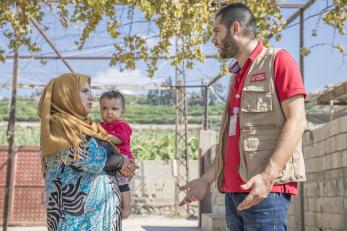
What about in Jordan? Are there stories of how Mercy Corps programs are changing refugees’ lives?
HUNTER KEITH: Our programs recognize people’s talents and give them a solid piece of ground to stand on while they are in this situation. Otherwise, the chances of falling through the cracks are so high. Older people experience some of the greatest benefits, especially those we have hired to work with children.
We have a huge staff of Syrians, and every one of them has a really interesting story. One is Sami, who worked with kids in the gym at Zaatari. When his family left the camp to resettle in Algeria, he chose to stay because he loved working with young people. The camps are interesting places because whole communities of people wind up together who would otherwise have segregated themselves, the elites from the non-elites, people from different professions, even men and women.
About one-third of the Syrians in Jordan are under the age of 25. What role will they play in the future peace of the region? Could you describe Mercy Corps’ research on how to end the cycle of violence?
HUNTER KEITH: The likelihood of someone committing violence is much higher if they have been exposed to violence before. More than ideology, more than the economic context, the indicator that tells you that somebody is going to become violent is whether they have been violent before or they’ve had violence meted out on them.
Development and relief programs often focus on things like essential services and employment, but violent groups recruit by offering vulnerable people something much different.
If you survey people about what they expect from the government, you will get a laundry list of material desires, such as goods and services, without any real critical thought about what government actually is. But if you instead ask them what they expect from the people around them—their neighbors, their family, their friends—you force them to think much more critically about what it takes, for example, to build a road. Do I expect my neighbor to contribute to a community path that is then going to deliver a service to me?
What are some of the responses you have heard from people?
HUNTER KEITH: People take a step back and say, “I expect my neighbors to be nice to me, I expect them to be fair, I expect that when I have a problem, they may help me solve it.” That’s what extremist groups offered to these people. It has to do with much more than material desires; it has to do with how people relate to one another.
If we want to be smart about how we work against that, we need to understand it better. Then we need to work through the structures of government. That’s what an organization like Mercy Corps can do — provide small examples of those alternatives in communities at the grassroots level.
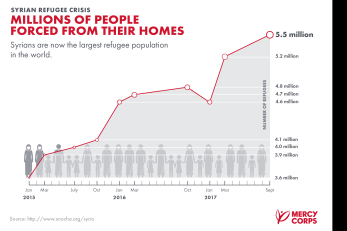
As they mark the grim anniversary of another year of war, what do Syrians expect from the next 12 months?
GEORGE ANTOUN: Honestly, no one is sure. If you look at the landscape in Syria, a lot has changed in the past year. You see the government taking territory and consolidating power. If this continues, we are moving to a new situation where there could be large areas in Syria where there is no fighting. However, if there is no peace settlement and peace treaty in Syria, it is still unsafe for refugees to start returning.
But you cannot stop them. If you have wide areas in Syria that are relatively safe, where there is no more fighting, that are under the control of one party, then people may start thinking of going back, especially if humanitarian assistance in Lebanon or Jordan keeps decreasing.
Most of the Syrians you speak with say they would definitely go back. But their towns are destroyed, there is nothing for them to go back to right now.
If there is no peace settlement and peace treaty in Syria, it is still unsafe for refugees to start returning.
HUNTER KEITH: Our concern, as Mercy Corps, is for the protection of people who might be forced to go back to Syria. If there were a clear future with a clear outcome, that would be one thing. You would have people here carefully considering their options. But, seven years on, I don’t know that people have the information they need to start piecing through that for themselves. The saddest aspect is it won’t be resolved for many years.
I suspect that the image of Syria in the minds of most Syrians is just horribly complicated. People still think of Syria as home, but that is very different from practical expectations of return. So a lot of people assume they will be here a very long time, if not forever.
Does that view change based on how old they are?
HUNTER KEITH: A middle-aged person may not expect to return to normal life, but they want it for their children. The future that’s easiest to imagine for them is the one in Jordan. The closeness of Jordan to Syria, culturally and socially, allows people to imagine their future here, and I think that many people are just trying to get on with it.
Jordan has probably come to terms with that to some extent. It may not be something that Jordanians want to think about, but there is a feeling that a very large number of Syrians will remain even after Syria stabilizes.
This story is part of our special series, 7 for 7: Seven voices for seven years of the Syria crisis. View the complete series here ▸
